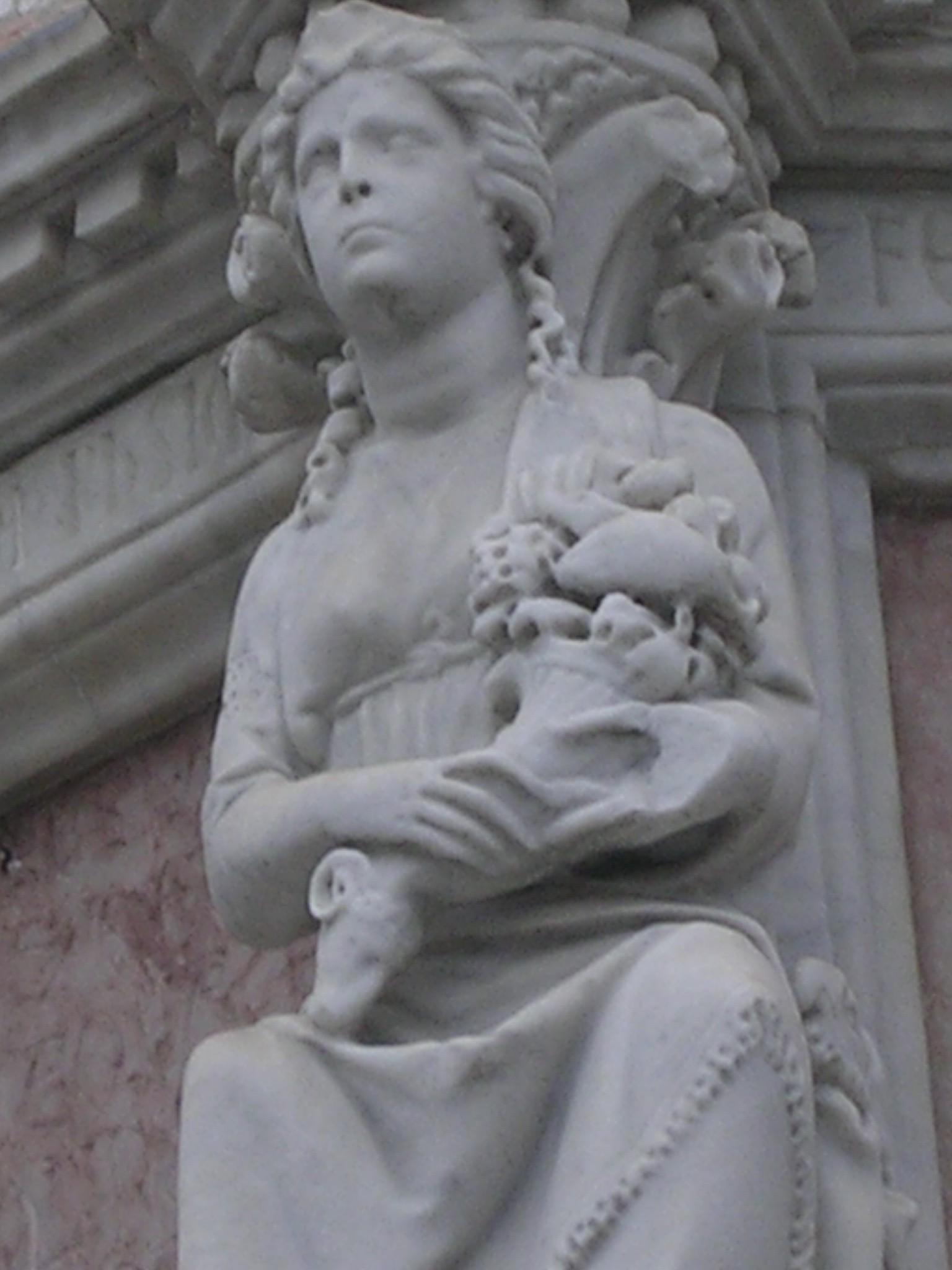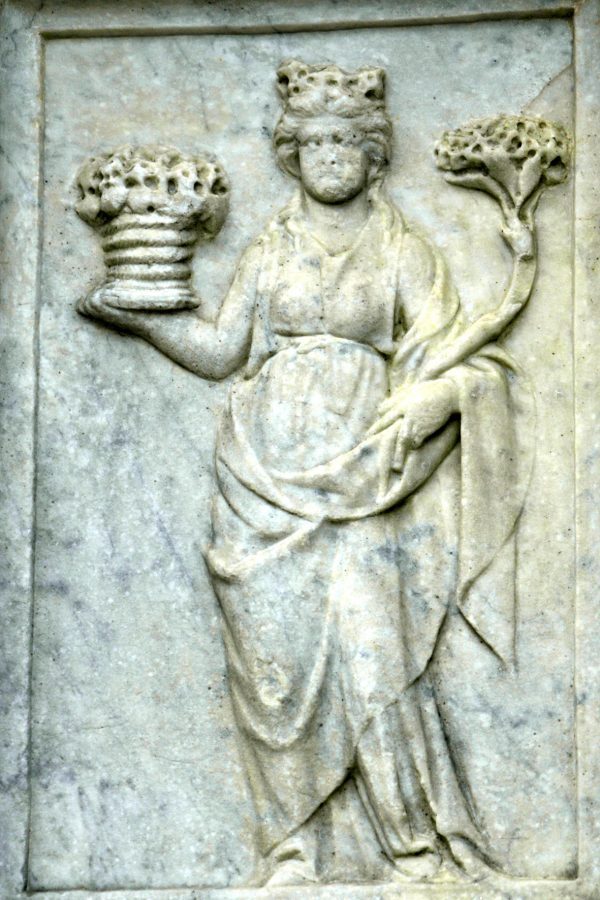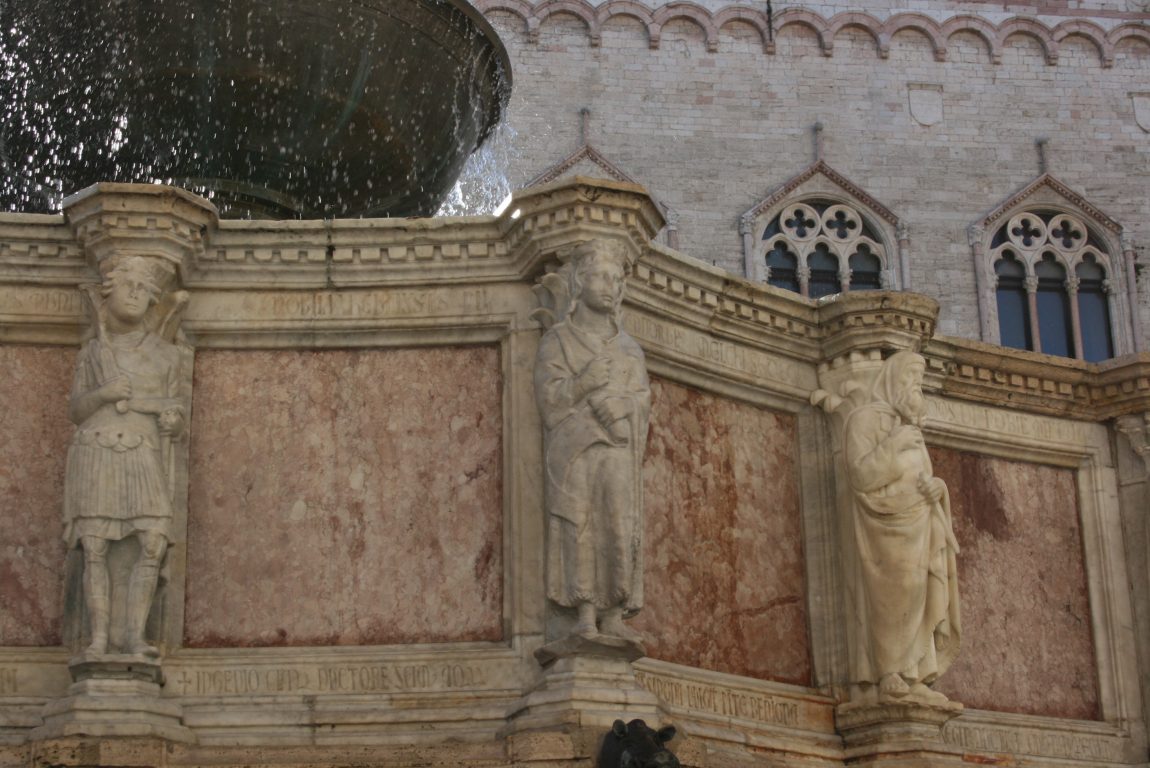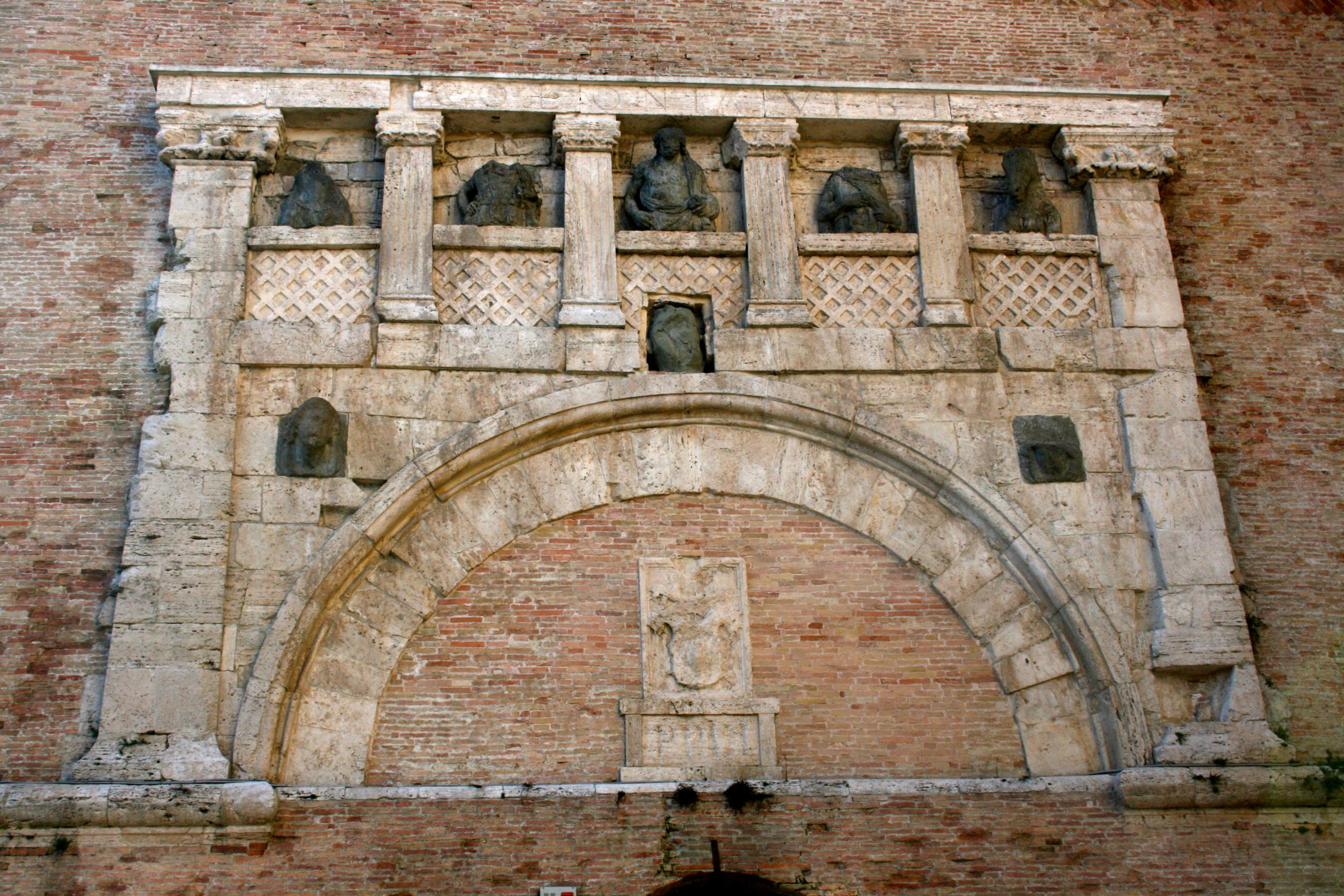April and Venus Verticordia
The female protagonist of the double scene of April, carved by Giovanni and Nicola Pisano in the lower basin of the Main Fountain of Perugia, holds a floral wreath and a bouquet of flowers in her hands.
There is no doubt of her identity as uxor (wife in Latin), as it’s clearly written in stone, in Latin letters, above the respective scenes that belongs to the famous medieval cycle of the twelve months.
The wife stands on the left side of her husband. He is a noble, elegant man with a garland on his head, holding a flowered branch in his left hand.
The noble and composed posture of these two figures seems to suggest that they are celebrating their wedding: the young woman looks like an elegant bride, and we know that in the Middle Ages the months of April and May were the favourite months to get married, representing the arrival of spring and the renewal of nature.
In the religious Romancalendar of ancient Rome there was a festival named Veneralia that took place on April 1st ( the first day of each month was named Kalends ) in honor of Venus Verticordia, the Roman goddess of love and beauty (who was able to “change” the human hearts. She was named Verticordia, that means literally she who “turns” hearts .We know from the poet Ovid that in the first day of April women celebrated Venus with this title.

The sacred rituals to honor the goddess Venus Verticordia are described by Ovidio in the Book IV of the Fasti: “Perform the rites of the goddess, Roman brides and mothers, and you who must not wear the headbands and long robes. Remove the golden necklaces from her marble neck. Remove her riches: the goddess must be cleansed (… )Now she’s given fresh flowers, and new-sprung roses. She commands you too to bathe, under the green myrtle”
After having washed the statue of Venus and themselves, the Roman brides and the Roman wives garlanded with the sacred myrtle and offered flowers to the goddess of love and beauty. Then the devotees drank the “cocetum“, a drink of milk mixed with bean honey and ground poppy flower, that lead them into a deep, alterate state of mind.


In the upper basin of the Main Fountain of Perugia, directly in correspondence with the twined scene representing April, we note another allegoric female figure carved by Giovanni and Nicola Pisano: the personification of Perugia. She is representing sitting an elegant matrona, holding a plentiful cornucopia (symbol of fertility and abundance).
This attribute was also associated with the Roman goddess Fortune (corresponding to the Greek Tyche), often represented wearing a turreted crown, symbolising the city walls she protected.
What a surprise to discover that the goddess Fortune was celebrated in the ancient religious Roman calendar along with Venus on the first day of April!
Antonella Bazzoli, April 1st 2010




